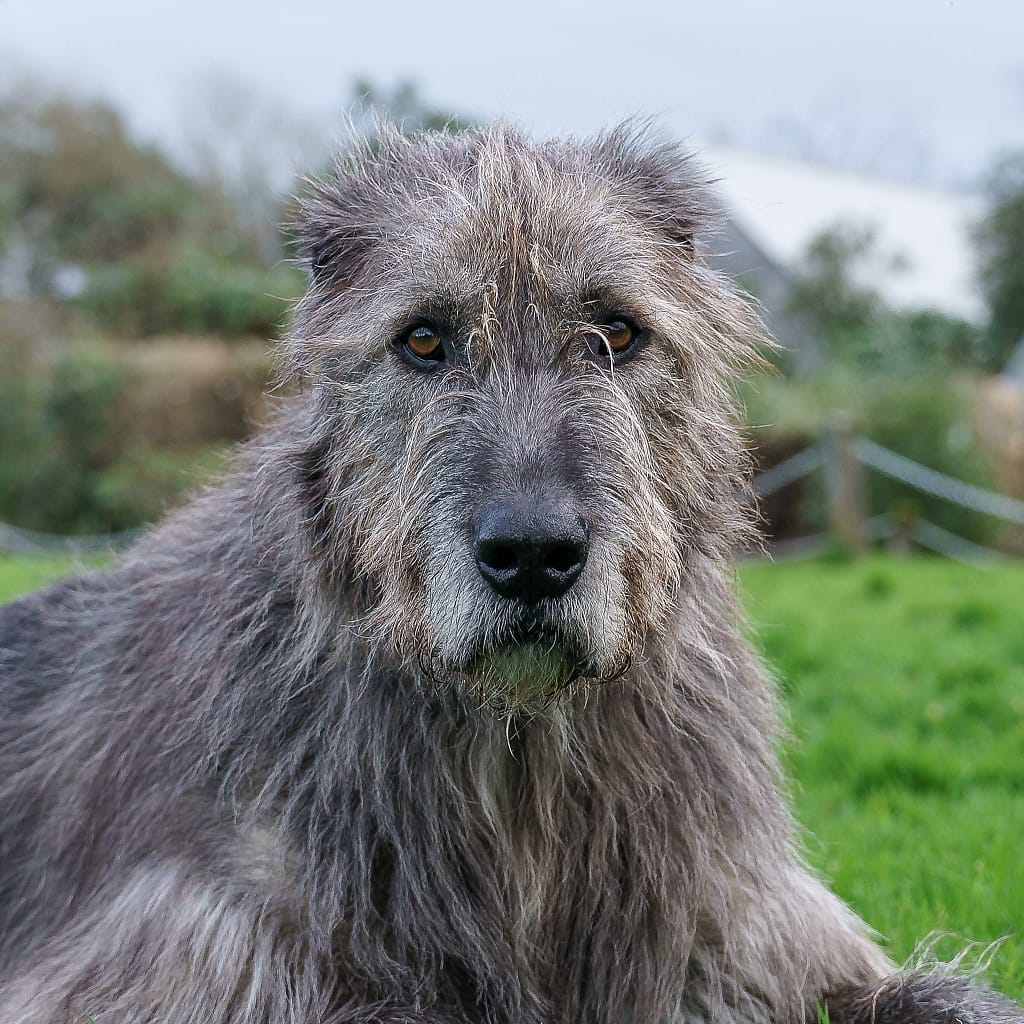Discovering Ballyseede Castle
Ballyseede Castle Hotel is dark, brooding and full of history. Plus it even has some ghosts!

Last spring, my husband, Gerhard, and I decided to celebrate our fifth wedding anniversary by spending a night at Ballyseede Castle, which is located just east of Tralee in County Kerry, Ireland. The castle’s grounds are contiguous to the beautiful Ballyseedy Woods that I wrote about last week. In fact, it was while I was researching Ballyseedy Woods that I first discovered the four-star castle hotel. So Gerhard and I decided on the spur of the moment to first explore the woods (and its lovely wild garlic) and then to spend the night in the castle.
First constructed in the 16th century, the castle has been completely renovated several times over the centuries. But it still retains the feeling of a real castle, which makes spending the night there a particularly interesting experience.

A bit of history
Like just about everywhere in Ireland, Ballyseede Castle has witnessed numerous historical—and often tragic—events.
Sometime in the 1500s, the powerful Fitzgerald family built the castle as a garrison. The Fitzgeralds had originally moved to Ireland from Wales in the 12th century as part of the Anglo-Norman invasion. In 1329, the English monarchy awarded a title of nobility called Earl of Desmond to Maurice Fitzgerald and his heirs.
Over the centuries, however, the Catholic Fitzgeralds became assimilated in Ireland and refused to swear their allegiance to the English Crown. This eventually led to the Desmond Rebellions, a series of skirmishes that lasted for over three centuries.
In 1583 soldiers loyal to Queen Elizabeth I captured Gerald Fitzgerald, the 16th Earl of Desmond, in the Stacks Mountains (which is the range that dominates the Tralee skyline). Charged with treason to the Crown on 11th November 1583, Fitzgerald was taken to the grounds at Ballyseede Castle and beheaded. His head was then taken to London, where it was displayed in a cage on London Bridge as a word of warning to others who might try to rebel against the Crown.
In addition, the family’s lands were confiscated and their title was taken away.
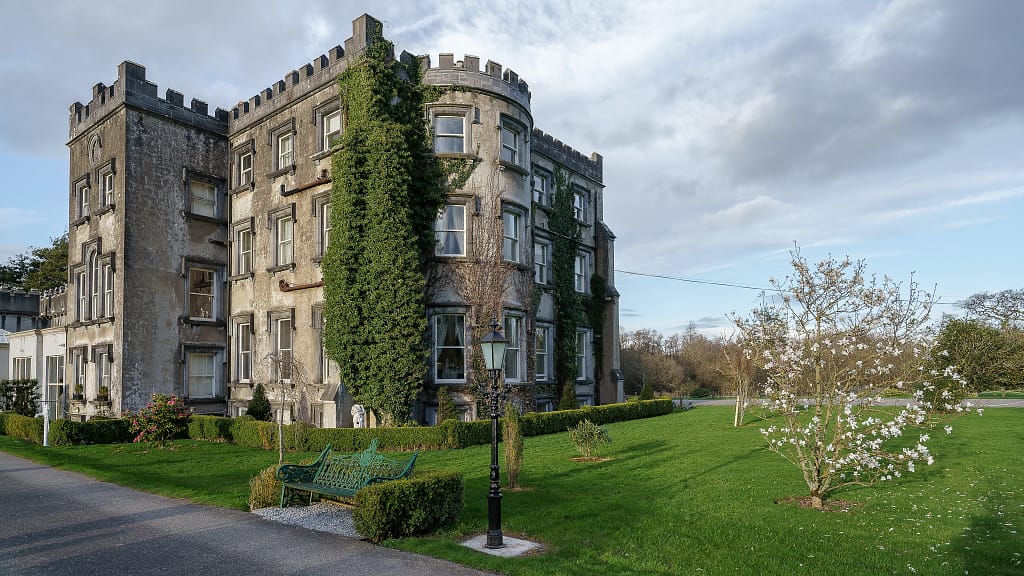
In 1590, the Crown instructed the Governor of Kerry, Sir Edward Denny, to lease Ballyseede Castle—along with its 3,000 surrounding acres—to Thomas Blennerhassett of Cumberland, England. The terms of the lease were quite unusual: The family was asked to pay an annual rent of six pounds and to present a red rose every year on Midsummer’s Day!
Over the centuries, the castle fell into ruin. In 1721, William Blennerhassett constructed a new residence on the site that he named Elm Grove. This structure and the surrounding grounds went through major expansions in the late 18th and early 19th centuries and eventually became known once again as Ballyseede.
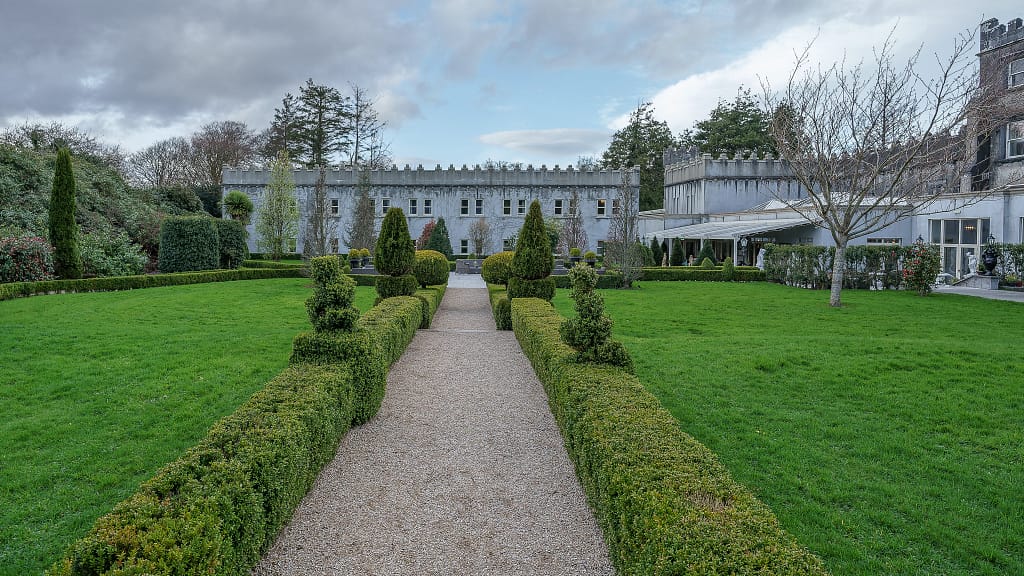
Ireland’s long struggle for independence from England continued into the 20th century, along with many violent deaths in the area around Ballyseede Castle. In particular, nine IRA prisoners were executed at Ballyseede Cross in 1923 in retaliation for an ambush that killed Free State soldiers. A memorial now stands at the site to honor all of those who lost their lives in the conflict.
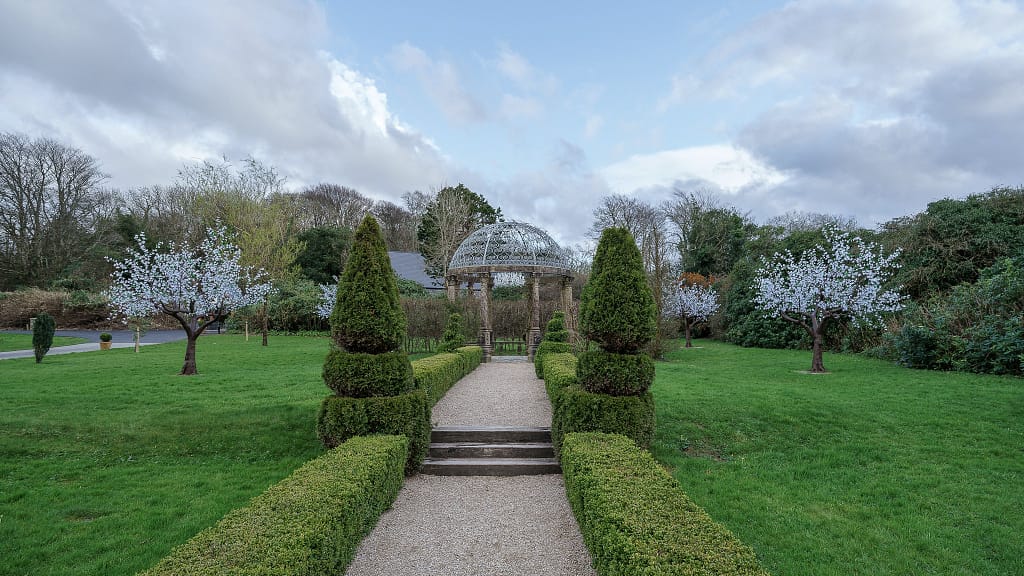
The final Blennerhassett to occupy Ballyseede Castle was Hilda, who served as a nurse in France and Belgium during World War I and was awarded the Mons Star in recognition of her service. Hilda died without heirs in 1965 and was buried next to her family members in the nearby Ballyseede graveyard. Upon her death, the castle was sold to new owners.
In 2005, the Corscaddens—an Irish hotelier family—purchased Ballyseede Castle and transformed it into a luxury hotel set on 30 acres of gardens and native Irish woodland. Today the hotel offers 45 individually designed ensuite bedrooms.
The entrance
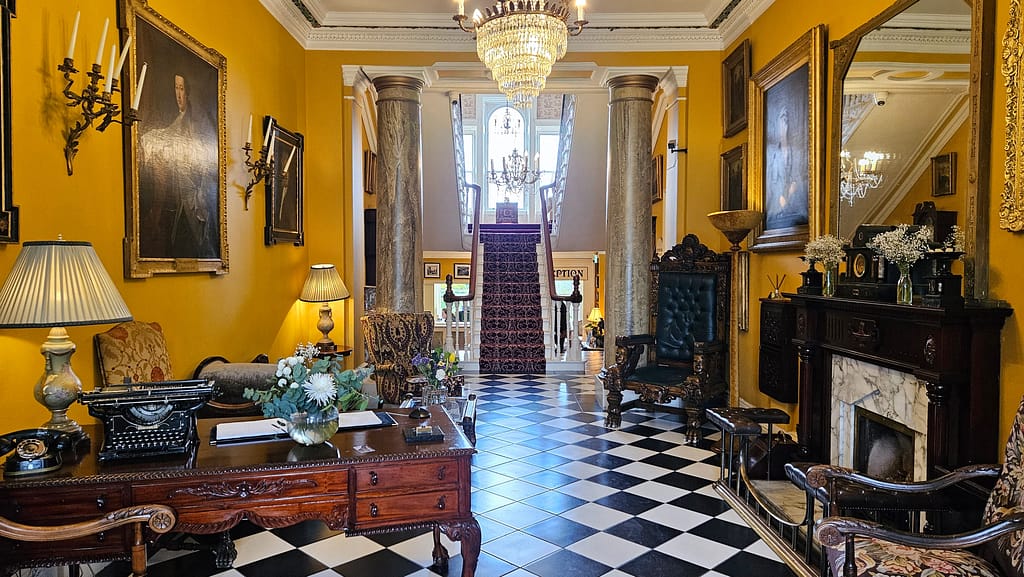
The entry to the castle is full of warmth and charm. It is important to note, however, that the castle has no lift, so guests need to be able to walk up one or more flights of stairs to their bedrooms.

The living rooms
The castle has two charming living rooms that guests can choose to relax in. Each one has a beautiful fireplace and is decorated with comfortable sofas, chairs, antiques and pictures. A piano and a chess set are also available. In addition, there is a light-filled orangery room where guests can eat and drink.
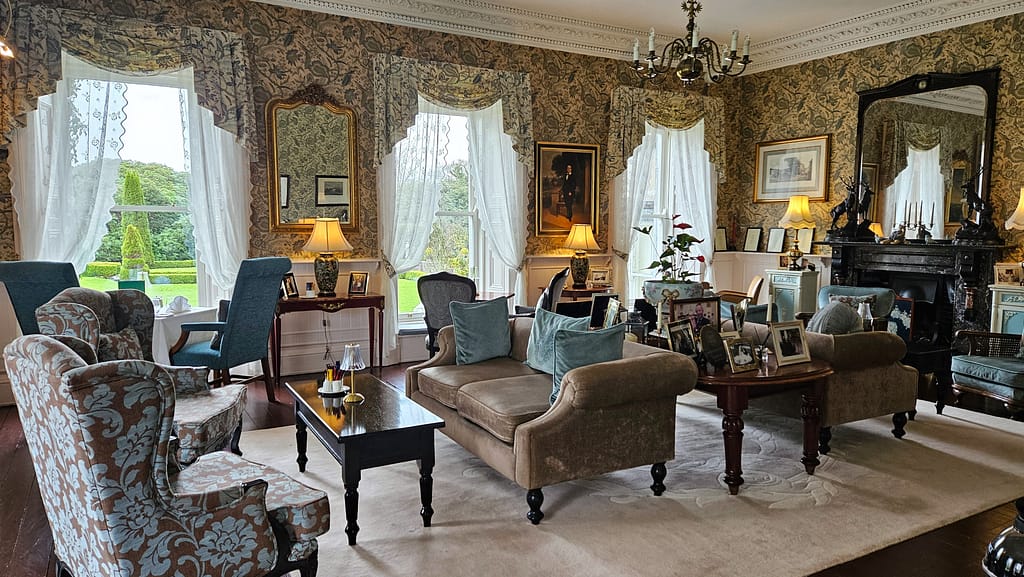
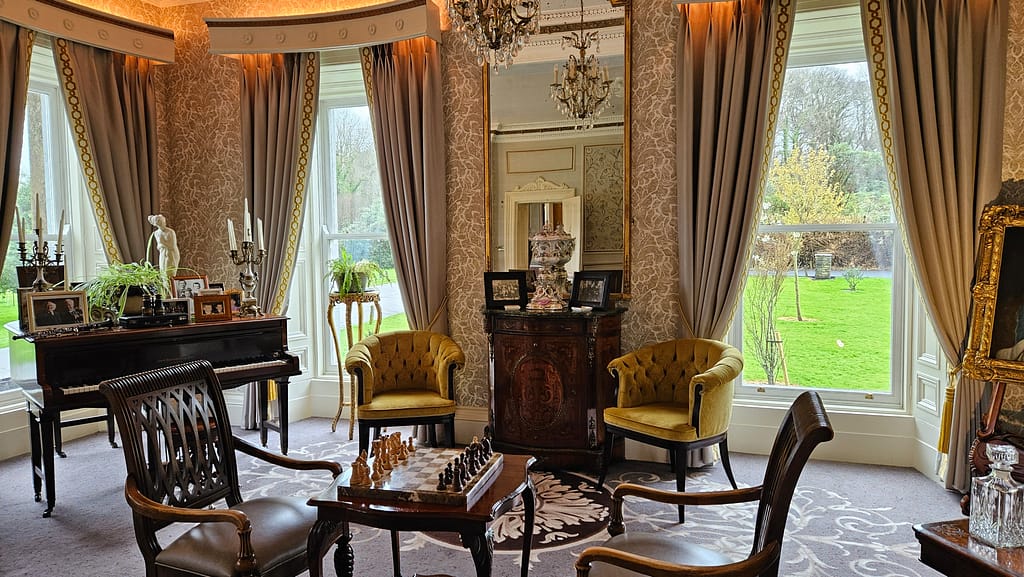
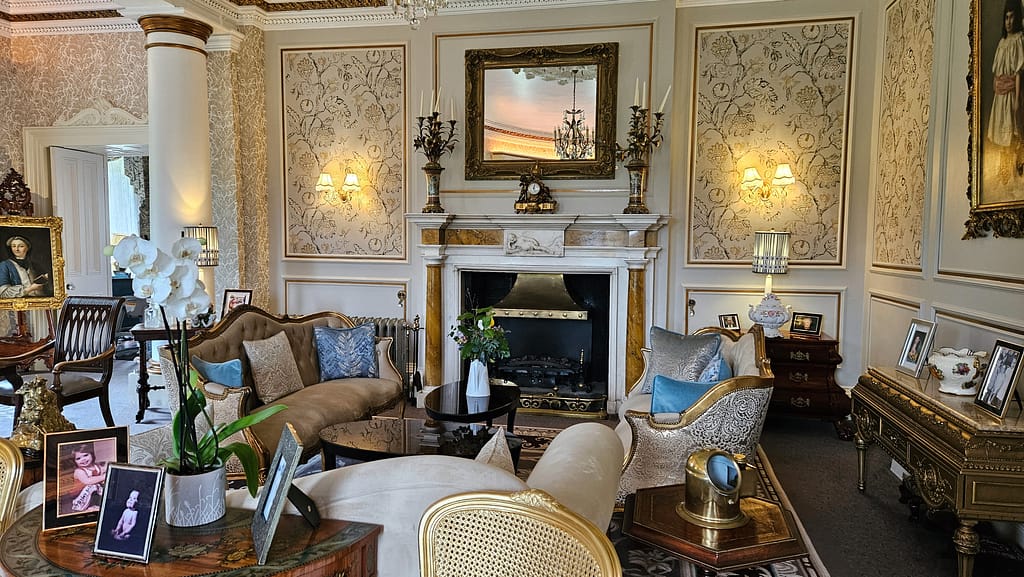

The Bedroom
Our bedroom (#808) was the largest hotel room I have ever stayed in! The bed was really comfortable, and the bathroom was large and beautiful.
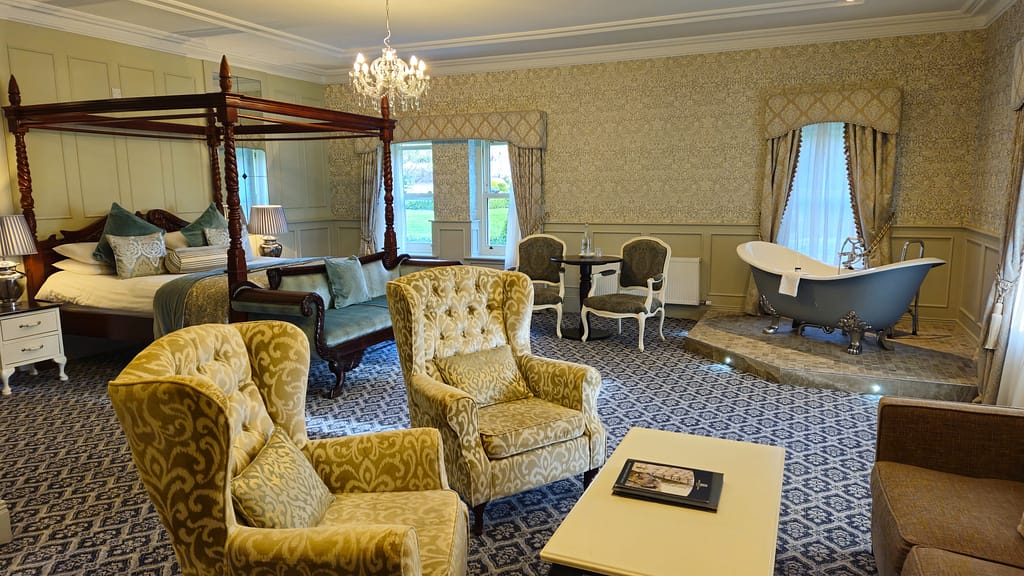
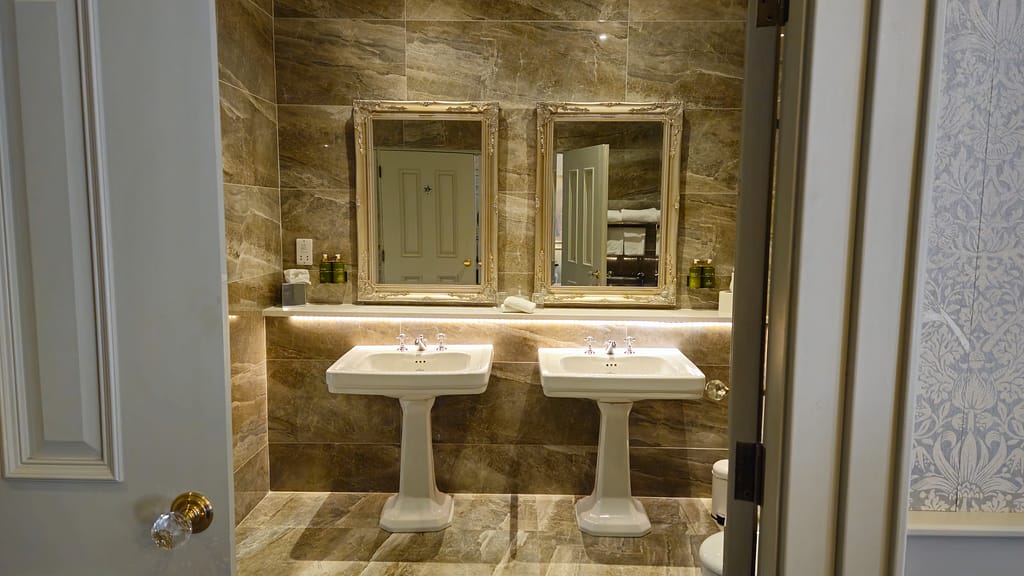
The Restaurant: The Stone Room
We ate a delicious dinner in the Stone Room. I particularly liked it because—among all the rooms in the hotel—it gave us the feeling of being in a real castle.
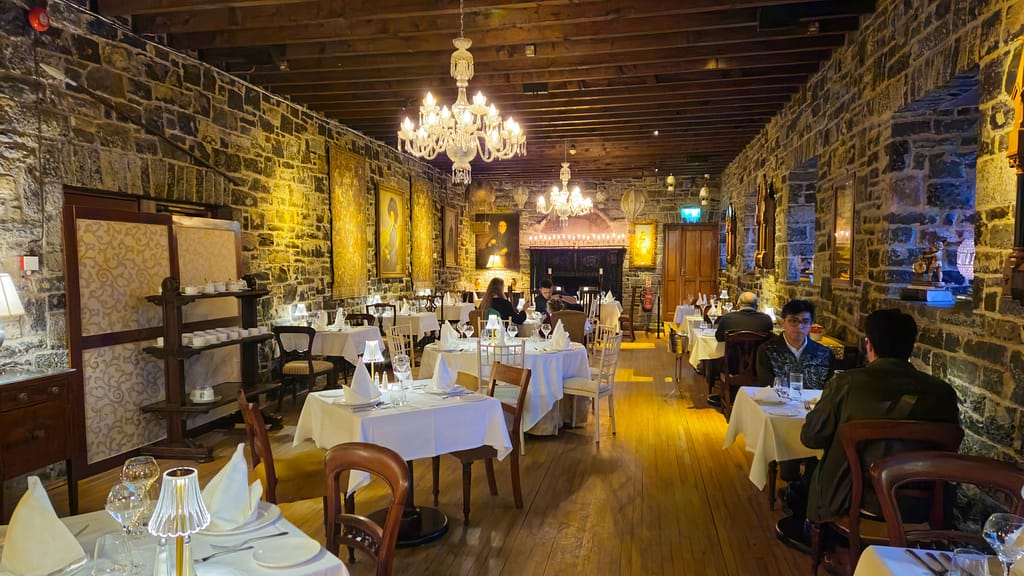


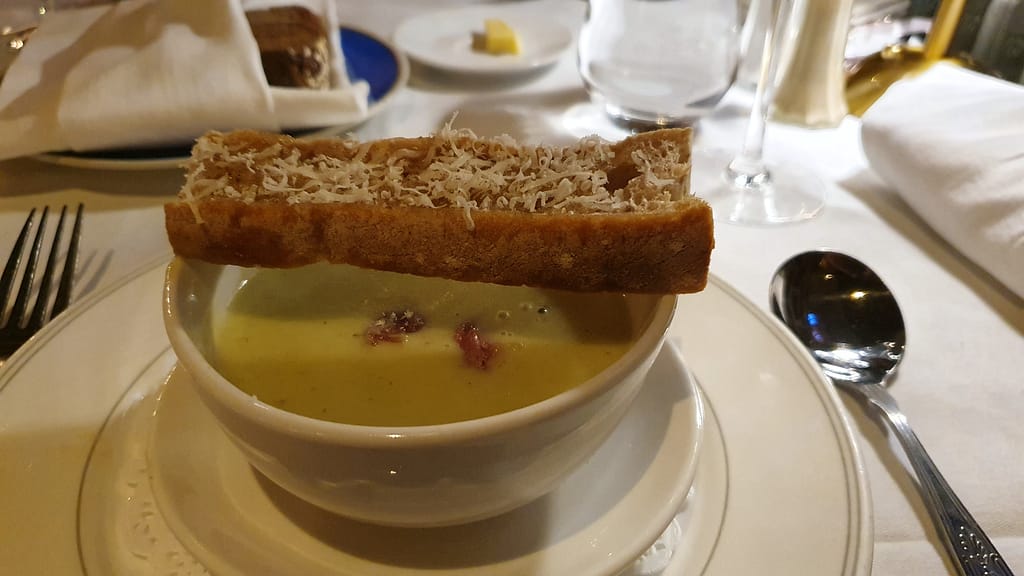
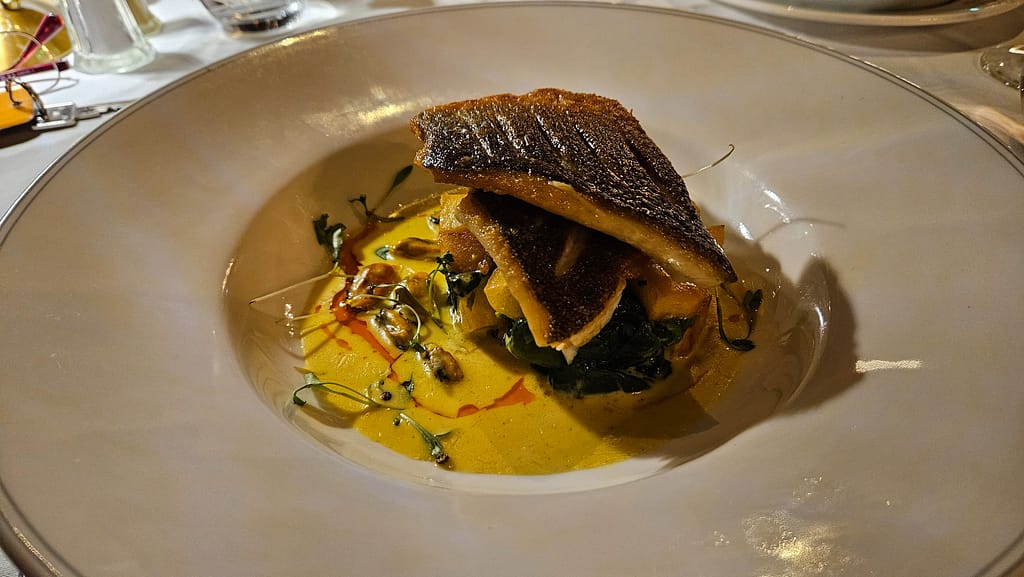


Ghosts?
Every self-respecting castle needs to have a ghost, and Ballyseede is no exception. In particular, people seem to see Hilda, who lived in the castle until her death in 1965. She is said to appear most often on March 24th (I’m not sure why), and many guests have detected the smell of roses wafting through the upper rooms.
I have never seen a ghost, so I cannot say whether this is true or not. Considering the castle’s long and turbulent past, however, it is easy to believe that numerous ghosts are lurking both within the castle and outside its walls.
